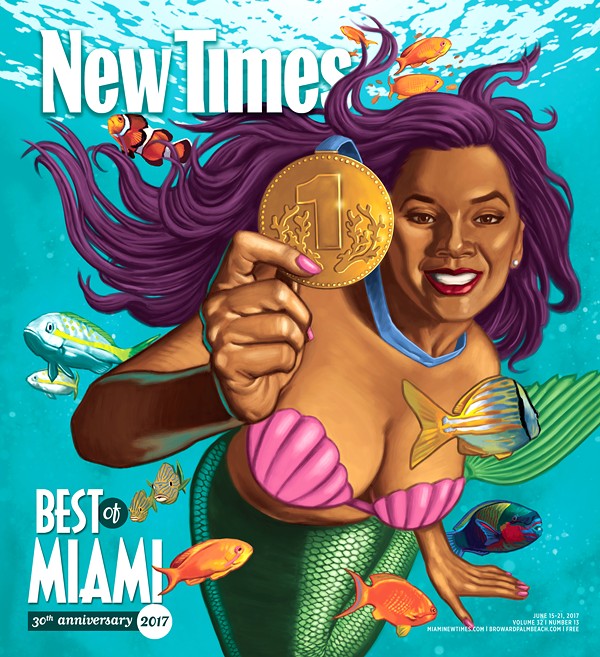GableStage audiences may have discovered Wesley Slade as a manic director in 2016's It's Only a Play, a neofarce performed in broad strokes. There was little in that performance that suggested the depth of feeling and shattering emotional resonance of Slade's return to GableStage 11 months later in Hand to God. The dark comedy about belief and grief represented GableStage at its vintage peak — uproarious humor, anarchic action, the irreverent tipping of sacred cows — and Slade's dual performances were the nucleus around which all other elements rotated. As Jason, a retiring teenager with a history of repressed anguish, Slade emanated vulnerability and selective aphasia. As Tyrone, a hand puppet whose power increased the more its owner requested its services, Slade was hyperconfident, uncouth, compelled by the darkest forces of human nature. It was a performance that teetered on the border between calculation and abandon, control and possession, all expressed in Slade's dexterous puppeteering skills, as well as his conflicted facial expressions and vocal inflections. The result was a funny-scary internal wrestling match — a stirring star turn in multiple dimensions.
Best Actress
Niki Fridh

For an actor, there's little else more terrifying than your first solo show: the attention, the pressure, the insane number of words. Moreover, there's no other actor onstage to save you. There's no escape hatch or parachute if you mess up, which seems like an appropriate metaphor when discussing Thinking Cap Theatre's Grounded, George Brant's timely exploration of a fighter pilot's existential crisis. If Niki Fridh was sweating bullets before the show, you certainly couldn't tell from her performance. In her finest hour yet, she embodied all aspects of her character's increasingly complicated personality, from the initially cocksure, self-determined ace to the panic-stricken, criminally overworked drone operator who discovers the moral gravity of remote warfare. Along the way, she navigated challenges both universal — juggling a meaningful career with domestic tranquility — and specific, such as the psychic, all-encompassing traumas of war that don't end when reassigned to the so-called Chair Force. From witty and sexy to numb and broken, Fridh left no emotional stone unturned, and probably uncovered more than existed on the page, while manning the controls for an unforgettable ride.
Best Director
Stuart Meltzer
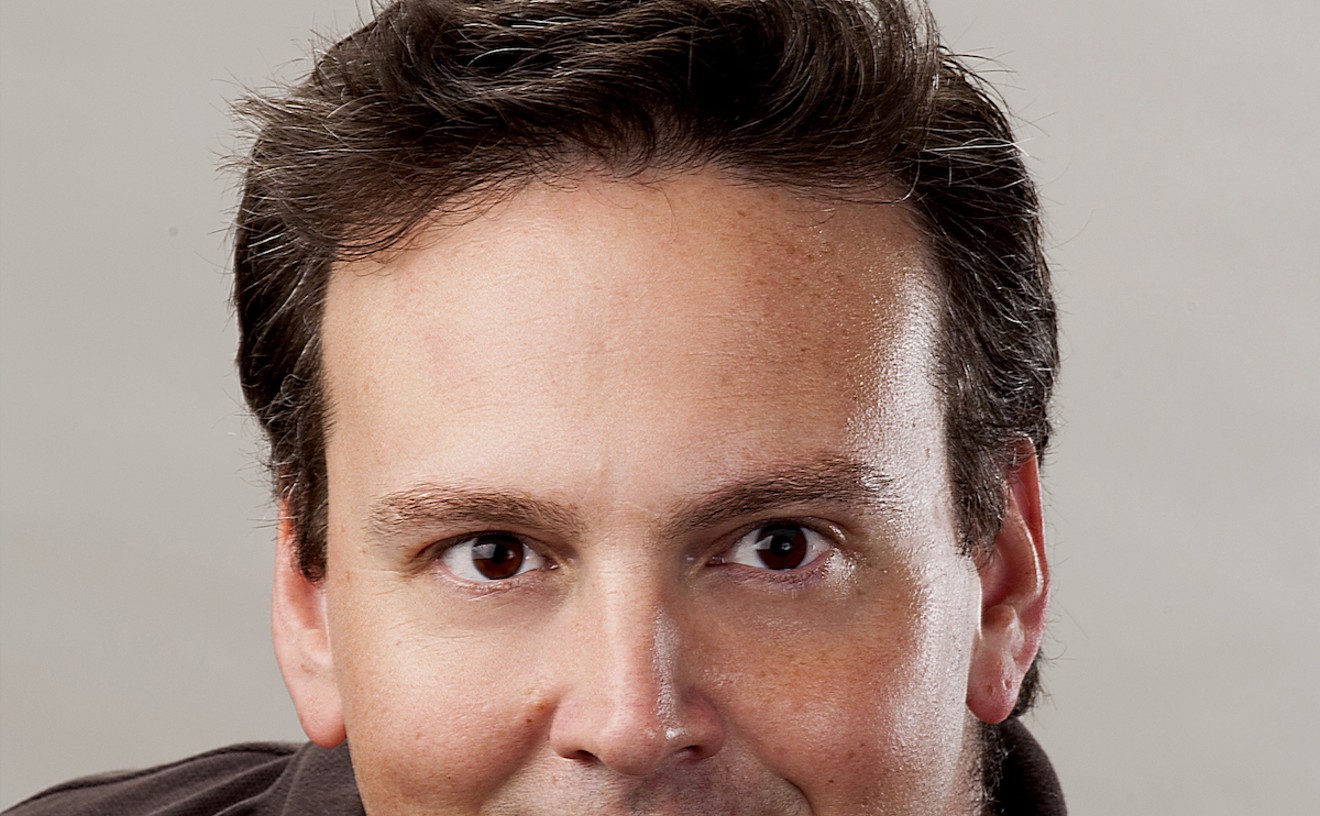
Some directors assert their idiosyncratic visions atop any material they touch; others acquiesce gallantly to the specific needs of each source. As artistic director of Zoetic Stage, Stuart Meltzer exemplified the latter approach during his company's eclectic 2016-17 season. From plays to musicals, solo shows to bustling ensembles, world premieres to established classics, this gracious chameleon helmed projects that were as divergent as they were unassailably difficult. He created a benchmark style for Michael McKeever's gripping premiere After by staging the play's domestic tête-á-têtes like verbal boxing matches of advances and retreats, parries and thrusts. He lovingly revived Stephen Sondheim's challenging Sunday in the Park With George like a master painter himself, creating a sustained celebration of color, art, and life. With !Fuacata!, he developed an exactingly produced one-woman show from scratch and guided Elena Maria Garcia to a performance that felt like a career summation. He finished the season with Harold Pinter's The Caretaker, finding both the humor and devastation in this patience-demanding experiment while using the many hidden treasures in the staggering set design. In each case, Meltzer exceeded the show's herculean standards with the illusion of ease.
Best Theater for Drama
Thinking Cap Theatre

It takes a certain kind of madness to even attempt to stage a play like A Public Reading of an Unproduced Screenplay About the Death of Walt Disney and a certain kind of genius to pull it off. Lucas Hnath's offbeat character study of the impresario seems designed in part to exasperate: It's written like an ADHD screenplay, with the actor playing Uncle Walt — in this case, an extraordinary Peter Galman — restlessly shuffling through moods and scenes with the clipped command, "Cut to... cut to... cut to." Thinking Cap's spellbinding production last fall wasn't for everybody, but then again, few of its masterpieces are. Artistic director Nicole Stodard followed Walt Disney with another polarizing work, Mud, a modernist classic of urban decay in which three tortured characters envelop themselves in a cocoon of codependence. Ever one to find beauty in darkness, Stodard employed impeccable lighting and sound choices that created a multisensory experience drenched in dread. This year's TCT productions continued to express the company's mastery of both the technical and narrative aspects of theater while tackling relevant themes: Grounded analyzed the emotional shrapnel of drone strikes, and Collective Rage: A Play in Five Betties addressed feminism in the Trump era.
Readers' choice: Adrienne Arsht Center for the Performing Arts
- 1501 S. Andrews Ave., Fort Lauderdale, 33316 Map
- 954-610-7263
- vanguardarts.org
Best Comedian
Pam Bruno
Pam Bruno, the best comedian in 2015 at Ultimate Miami (a competition to find the finest bartenders, drag queens, vocalists, and other performers), is the sort of fresh face Hollywood dreams about discovering — and she's in her mid-60s. A Miami transplant and Iowa native, Bruno is a former cranial sacral therapist, meaning her job involved relieving pain and tension through gentle manipulations of the head and spine. These days, she's more interested in relieving pain and tension in people by appealing to us through the blackest of humor. Her jokes are often dark and slightly disturbed, but her aw-shucks charm and dry wit allow her to nail routines that would flounder with lesser comics. She's like the fifth Golden Girl, a combination of Bea Arthur's character Dorothy and Estelle Getty's Sophia but entirely more relaxed. Her delivery is as gentle as the work she used to do but hits hard with morbid jokes about death, drug use, sex at all ages, and loneliness. Plenty of comics can do bleak, but she brings a perspective all her own, cultivated through years of experience. Her self-promoting motto is "Like wine, comedy gets better with age," and damn if it isn't true with Bruno.
Best Drag Queen
Missy Meyakie LePaige
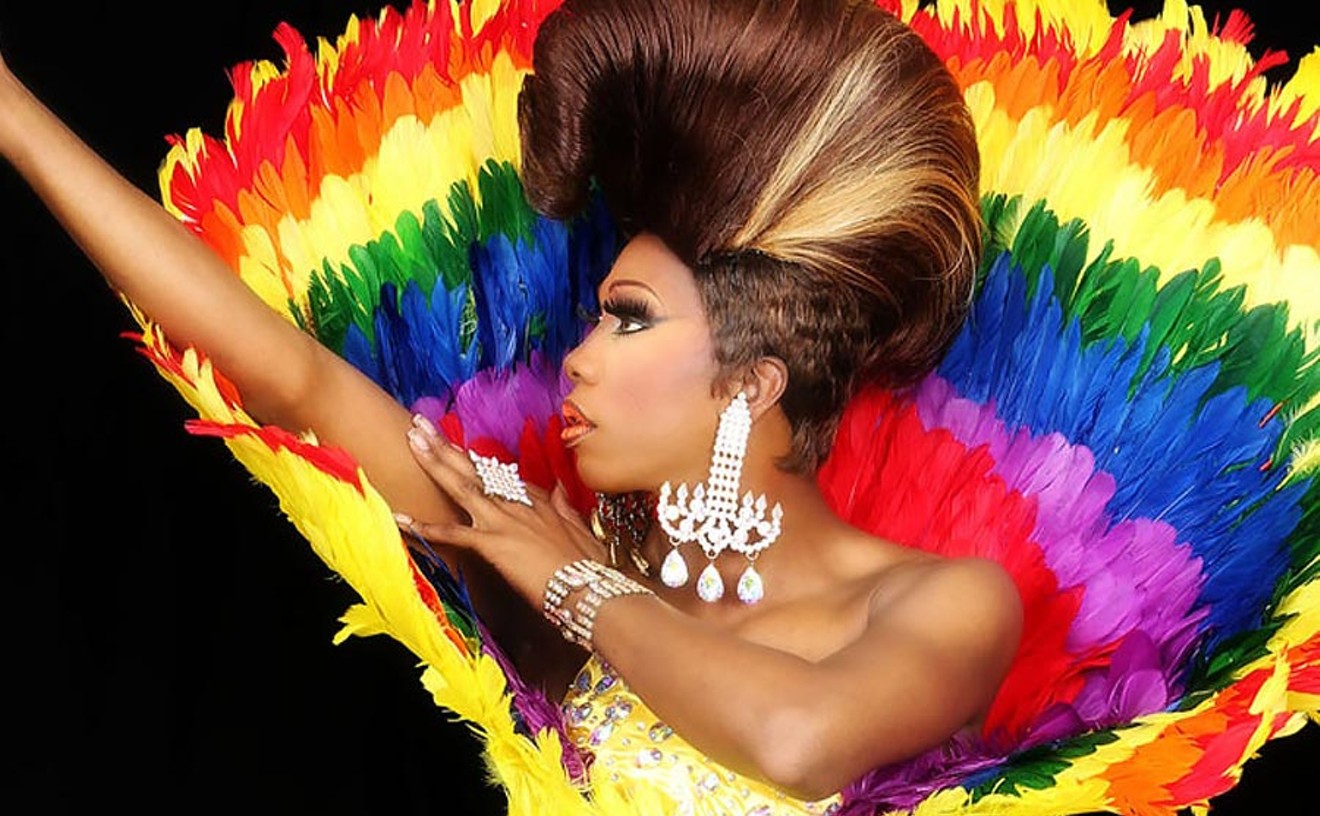
Whether she's inside the Palace in South Beach, on Ocean Drive's sidewalk, or even in the middle of the street, the whole world is a runway for Missy Meyakie LePaige. This fierce drag queen has embraced the Palace's slogan, "Every queen needs a palace," to the fullest. The 2015 Miss National Showgirl is one part class act and one part badass. LePaige is equally comfortable in elegant feathered evening wear and fur coats as she is strutting every inch of her attitude in a glittering church dress. She's forever dancing and gyrating, hands in the air for Jesus, her feet moving like they're touching the fires of Hell. LePaige is an athletic, agile performer who absolutely demands our attention. Her moniker was inspired by rapper Missy Elliott, fashion designer Issey Miyake, and her drag mother, Victoria Le Paige. Much like the songs by her hip-hop namesake, "Get Ur Freak On" and "Work It," Missy Meyakie LePaige brings an unavoidable energy through movement, singing, dancing, and laughing that prompts engagement from her audiences and some dollar bills for a lady hard at work.
Readers' choice: Queef Latina
Best Drag Show
Bareback Follies

New York nightlife maven Susanne Bartsch introduced the city that never sleeps to her brand of wild parties and unconventional fashion in the late '80s. Now her newest bimonthly at Brickell's Old Havana-style club, El Tucán, is as must-see as anything she's ever staged in the Big Apple. Held the last Tuesday every other month, Bareback Follies regularly stars gay and drag icons such as Amanda Lepore, Joey Arias, and Dirty Martini, plus all-stars from RuPaul's Drag Race. During this risqué evening — which costs $25 and includes a drink — pasties and nipple tassels are considered modest. An early show at 8 p.m. accommodates guests who find a late-night Tuesday party a little tough. But the 10 p.m. show is when the drag queens and models really get rowdy, pulling out all the stops, from striptease to elaborate one-woman light shows designed to upstage the next girl.
- 1111 SW First Ave., Miami, 33130 Map
- 305-535-0065
- eltucanmiami.com
Best Museum
Phillip and Patricia Frost Museum of Science
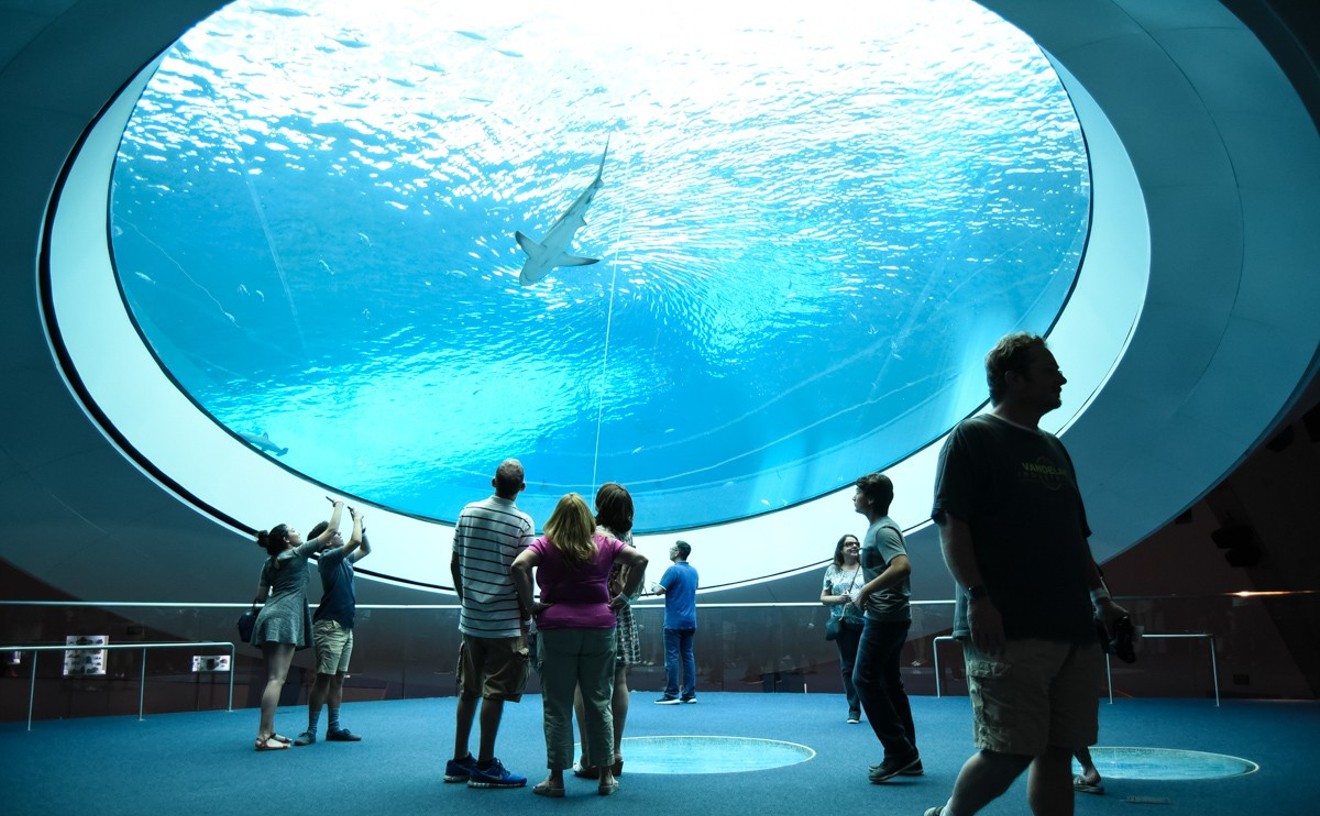
Repeat this five times: "I am not too cool for the science museum." Then head downtown. The new Frost Museum of Science — not to be confused with the Frost Art Museum out west at Florida International University — is amazing. Frost Science offers a 30-foot-long dinosaur, yellow-submarine elevators, a light floor, and a 500,000-gallon saltwater tank with a 31-foot-wide oculus that allows you to peer inside at various sea creatures, including sharks and rays. And the 250-seat, state-of-the-art planetarium continues Miami-Dade's favorite event: the First Fridays laser light show that was a tradition at the museum's former location near Vizcaya. Viva the new museum, but let us never forget the old one!
Readers' choice: Pérez Art Museum Miami
- 1101 Biscayne Blvd., Miami, 33132 Map
- 305-434-9600
- frostscience.org
Best Art Walk
Downtown Hollywood ArtWalk

Only a few short years ago, Wynwood's Second Saturday Art Walk was at the heart of a revolution. Up to 40 galleries would open their doors once a month, allowing the public to peruse every expanse of the creative mind. Wynwood, of course, has since leveraged that cachet to become a hipster commercial mecca, and many of the artists have fled for cheaper real estate. So the art faithful have turned their attention north to a burgeoning hot spot for both imagination and inebriation: downtown Hollywood. The area has been revitalized, both aesthetically and with new infrastructure. From 5 to 10 p.m. the third Saturday each month, sidewalks and storefronts welcome casual and hard-core art lovers. Attendees enjoy collections from local, regional, and international artists while classical and jazz bands perform live. Plus, many galleries are walking distance from dozens of bars, restaurants, cigar shops, and coffee bars. Street parking is mostly free and plentiful, and murals decorate the walls of many of the buildings. Downtown Hollywood ArtWalk, for now, is nowhere near the size and scale of its Miami counterpart, but that's a good thing. One day, this gathering's popularity might catch up to Wynwood's, so enjoy it while it lasts.
Best Public Art
Miami Mountain
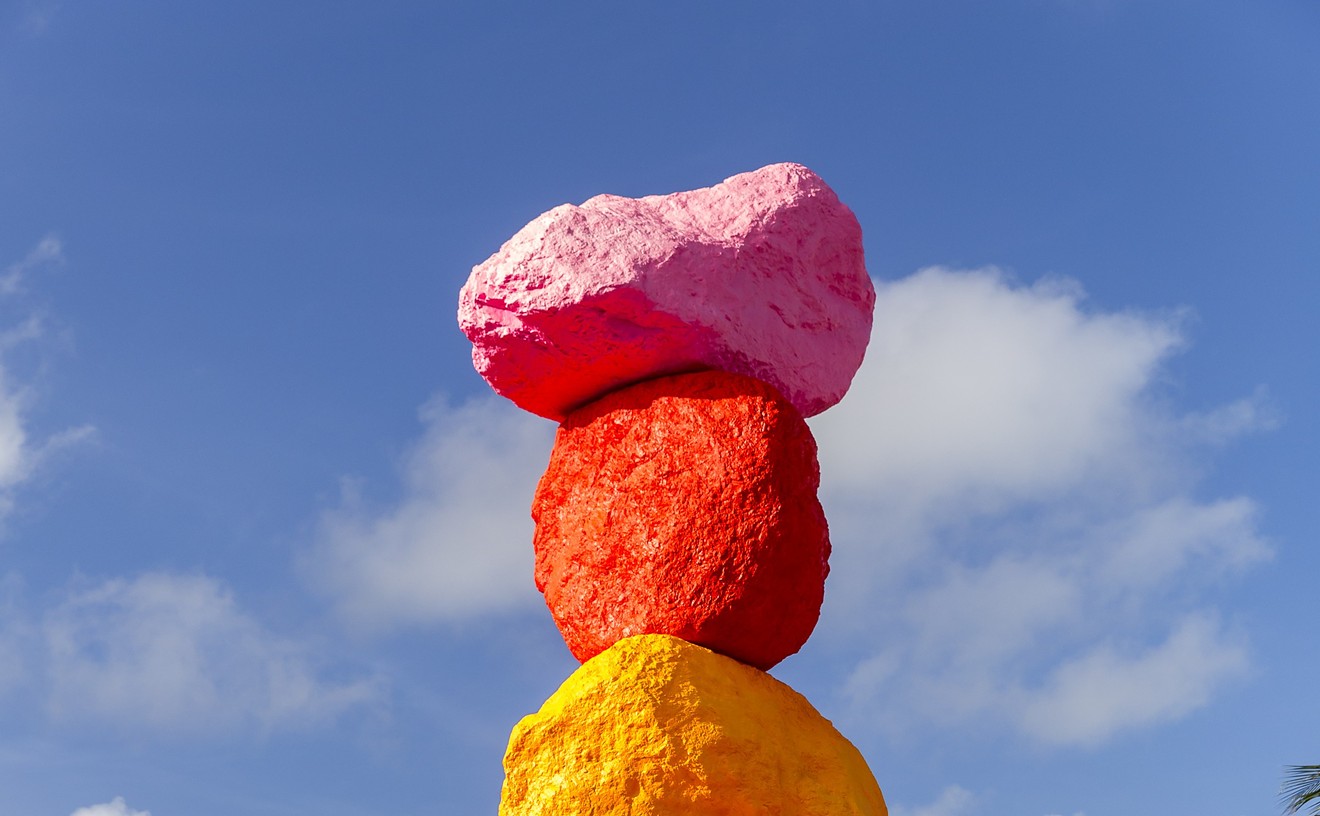
Even if you don't enjoy eating colorful candy marzipan, it's hard to argue with viewing monumental art that looks like it. Built in 2016 by the Swiss artist Ugo Rondinone, the 42-foot-tall Miami Mountain consists of five bright boulders that sit atop one another just feet from A1A in Collins Park. The sculpture is like a huge, delicious treat for all of South Beach. Rondinone recently installed seven of these sculptures in the desert outside Las Vegas, but those are planned to be there for only two years, while Miami's stack of stones is part of the Bass museum's permanent collection and will sit in place for the long haul. Also, technically, the piece is called a "cairn," a dandy way of referring to a pile of rocks. Turning a corner and seeing Miami Mountain is still a startling experience. The work, which is held together by an iron spine, immediately causes the viewer to question whether the rocks are real and then walk up and engage. The question of artificiality is one dear to Miami Beach, but like the city, the closer you get to the statue, the more awe-inspiring it becomes. It is joyous to look all the way to the top of the Beach's mountain, which, of course, is rainbow-hued and right by the sand.
- 2200 Collins Ave., Miami Beach, 33139 Map
- 305-673-7730



